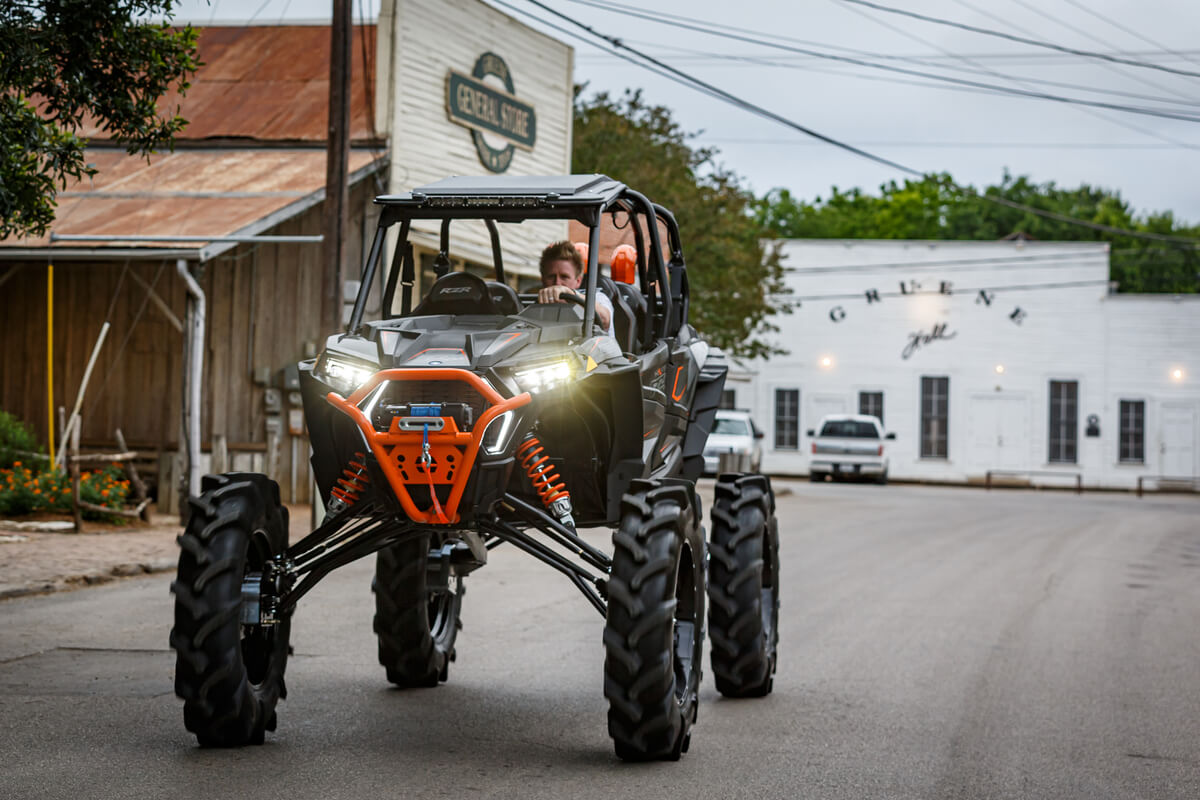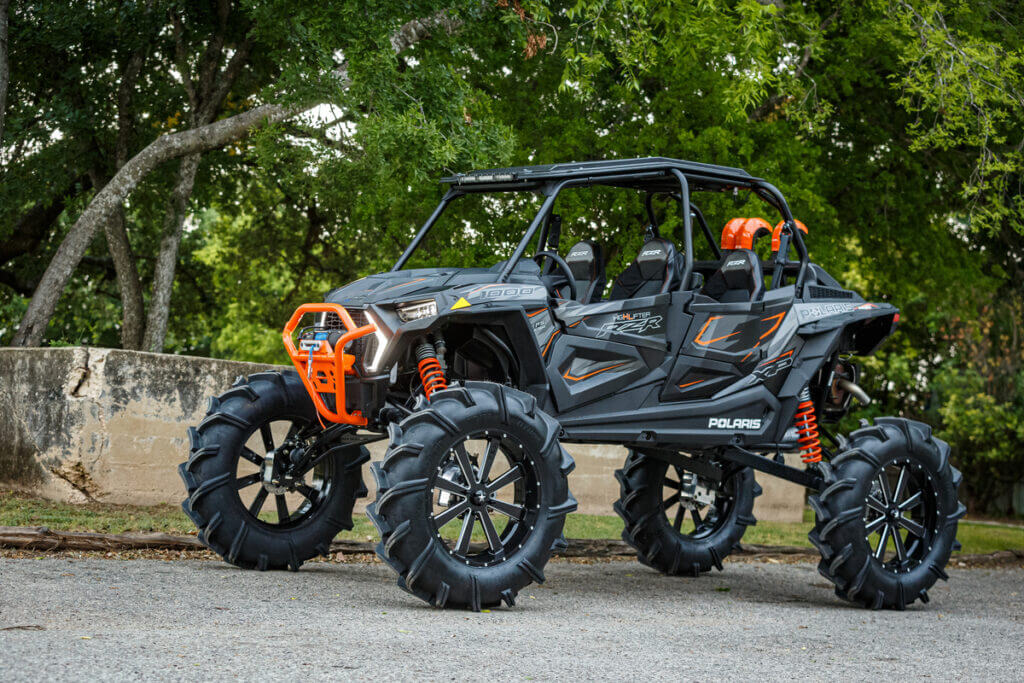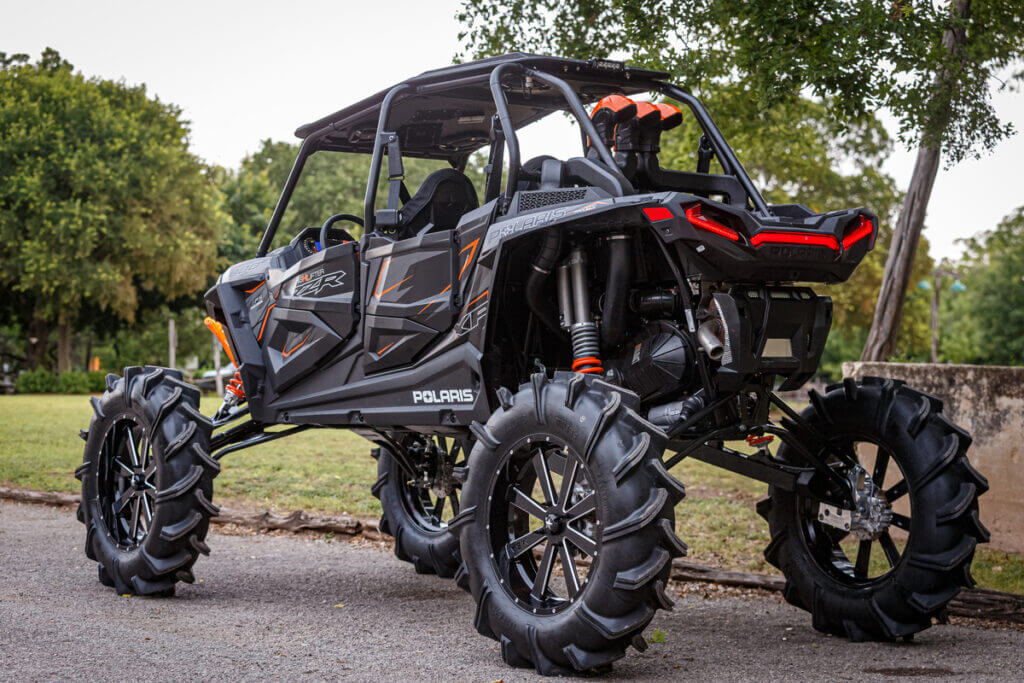
The Complete ATV Street Legal Guide
If you’re wondering: “can you make an ATV street legal?”, you’re in good company. High Lifter is here to help. ATVs are fun for a reason: they’re made for all terrain! If you’re not taking to the streets on your four wheeler, you might be missing out on some fun. But, it’s important to know the dos and don’ts of street riding. Is it legal to ride an ATV on the street where you live? What equipment do you need for legal street riding? How can you make an ATV street legal?
This guide will help you find out where you can ride, and what you’ll need to get the most out of it. Find out why some ATVs are street legal and why some aren’t below.
State laws and regulations
First and foremost, the first step to getting an ATV street legal is research focused on the laws in your state and county (or city). Each state has the right to set its own laws, and each state has its own different restrictions. For example, in Alaska, ATVs are not allowed on roads—except to cross them. We recommend starting on the local DOT website for your specific location and taking it from there.
It’s going to be different from state to state, but why quads or ATVs aren’t street legal is a tricky question. To make it more complicated, there can be conditional regulations, meaning that the exact law applying to an ATV rider changes depending on the accessories on your ATV and the conditions in which you’re riding it.
Here’s a quick list of the street riding rules in some of the most popular ATV riding states:
Conditional regulations
Mississippi
- Mississippi has strict state laws around the street-legal use of four wheelers or ATVs.
- There are a significant number of local jurisdictions that override the strict state-wide regulations—for example, permitting the use of ATVs on the street with a few conditional requirements like safety features, following designated signage, and not driving recklessly.
- Because it’s tricky to know what state or local regulations are the most important, it’s always best to check before you ride.
West Virginia
- West Virginia has conditional requirements for street legal ATV use, and requirements vary based on local jurisdiction.
- As a whole, ATVs are generally allowed on roads without a middle line and with less than two lanes.
- Crossing streets is allowed with the correct safety equipment on the riders and vehicle. Be sure to review local jurisdiction for speed limits and regulations.
Louisiana
- Louisian has conditional street legal requirements for ATV use, significantly more generous regulations.
- ATVs can be ridden legally on the shoulder of public streets in Louisiana (sans interstate highways and in Orleans Parish). This excludes a half-hour after sunrise and prior to sunset for visibility reasons.
Texas
- Overall, local legislation generally prohibits the use of ATVs on public streets in Texas, unless overruled by a more stringent local jurisdiction.
- Ranchers, farmers, first responders, and public utility workers following the proper safety guidelines are excluded.
- Usually, Riding ATVs on public lands is more permissible throughout Texas, so check with your local jurisdiction.
Florida
- Conditional street legal requirements for ATV use.
- Florida makes a distinction between ATVs and UTVs. What this means is, there are some areas where you can ride your side by side on the street, but not an ATV.
- While ATVs are prohibited on public roads in Florida, unpaved public roads are fair game as long as they are driven in the daytime and under 35 mph.
- Be sure to review local regulations and signage to be sure that your ATV is street legal in your area.
These are general guidelines in some of the most popular states for ATV street riding, but it’s important you check with your own local legislation first. The last thing any High Lifter fan needs is a ticket we could have avoided!

Do you need to register your ATV?
Some states require registering your ATV—while all states recommend you register it with the state. Not only does registering an ATV give you one extra layer of “proof of purchase”, but it can also help if the worst happens, and your vehicle is lost or stolen. Registration makes your ATV easily traceable to you. High Lifter recommends everyone register their vehicles for that reason alone.
Do you need to take a safety course?
Whether street riding or trail riding, it’s always smart to learn what you need to know—before you go. As far as what’s required, it varies state by state. States like Arkansas, California and Colorado require a safety education course for riding on public lands, while other states don’t require a course at all.
Making sure you have the proper education your state requires is key, and making sure you’re old enough to ride is just as important. And depending on where you are, it can be anything from a fine to a ticket to a more serious consequence. (Again, please read your local laws.)
Are there age restrictions for riding on the road?
Some states say you must be 10 or older to ride an ATV, while others are more strict and do not allow an ATV to be ridden until you’re 14.
At High Lifter, we know the best riders are still growing up right now, so we always recommend safety courses, helmets, and all the equipment your younger riders need to take to the streets. Be sure to check with local laws and regulations before letting the little ones ride.
Is the speed limit different for an ATV?
Many states say that you can only ride an ATV on the street in areas of speed limits from 35-60 mph. This is great for most riders who are looking to get a little speed, but stay safe at the same time. States like Utah limit your speed to under 50 mph, so it’s important to check before you ride.
Getting your ATV ready for the road
If you’re going to hit the pavement around other motorists and vehicles on public roads, there’s some parts and accessories you’re going to need. Some help you be seen, some help you see—but they all help improve your riding experience!
Street Legal ATV Light Kits
Headlights are key at night when you’re out on the trails—and even more important when you’re on the road. Making sure you have the correct turn signals, front lights, and brake lights is the first step towards a street legal ATV. Find your ATV light kit here.
When visibility gets even lower from fog or snow, a UTV or ATV whip light can help light the way and make yourself seen. You can customize the color any way you see fit. Get yours here.
“Roadie” Tires
Road-rated tires are primarily just radial tires (rather than Bias ply offroad tires) designed to take on pavement and hold up to high speeds. They have less aggressive tread, and more closely resemble a regular road tire for your car or truck–and prove that ATVs can be driven on the road.
Falcon Ridge and High Lifter are at the forefront of tech for ATV tires. Their all terrain, mud, and street-rated tires are fan favorites for a reason: smooth rides, and superior strength. Find your perfect fit here.
Side Mirrors
Some gear is more often required than others, depending on your location. For riders under 18 across multiple states, a helmet is a must. In certain places, side mirrors are even required. At High Lifter, we carry a wide variety of universal mirrors for ATVs and UTVs to help you get your ATV street legal. Find side mirrors here.
Safety tips for riding on the street
The trails are fun—and the roads are just as fun as long as you’re keeping your head on a swivel, and staying safe. Here’s a High Lifter list of tips to stay safe when riding your ATV on the street:
- Wear the right shoes: If you’re taking to the trails, you should wear boots. And no, we are never going to advocate that you ride barefoot or in just flip-flops (especially if you’re in a place that requires close-toed shoes, which you might be.)
- Understand your environment: There’s no stop signs in the woods, and no uphill stop signs either. Knowing how your vehicle’s throttle response in different situations can help you avoid more awkward, insurance-necessary situations.
- Pay attention to signage: Not only can signage tell you when or where it’s okay to ride, they help you know what’s coming up ahead. Just like a regular car or truck on the road, these signs matter to you, too.
- Keep your eyes on the road: There’s plenty of distractions on the road, and that includes your phone. Keeping your cell phone holstered or properly mounted can save you a lot of woe on the road, and help you get where you’re going. The best mounts for cell phones are found right here.
And don’t forget: there are local courses you can take in a lot of areas to make certain you know the rules. Again, check that DOT website.
Hitting the road with your ATV
With a couple of simple upgrades and a little bit of knowledge, you can be out riding on the roads in no time. With the High Lifter family of riders and employees behind you, we’re ready and waiting to hear how it goes! Find the right parts, the smartest accessories, and all the info you need to take an ATV on the street here. Shop the best parts and accessories for street legal ATVs at High Lifter.

